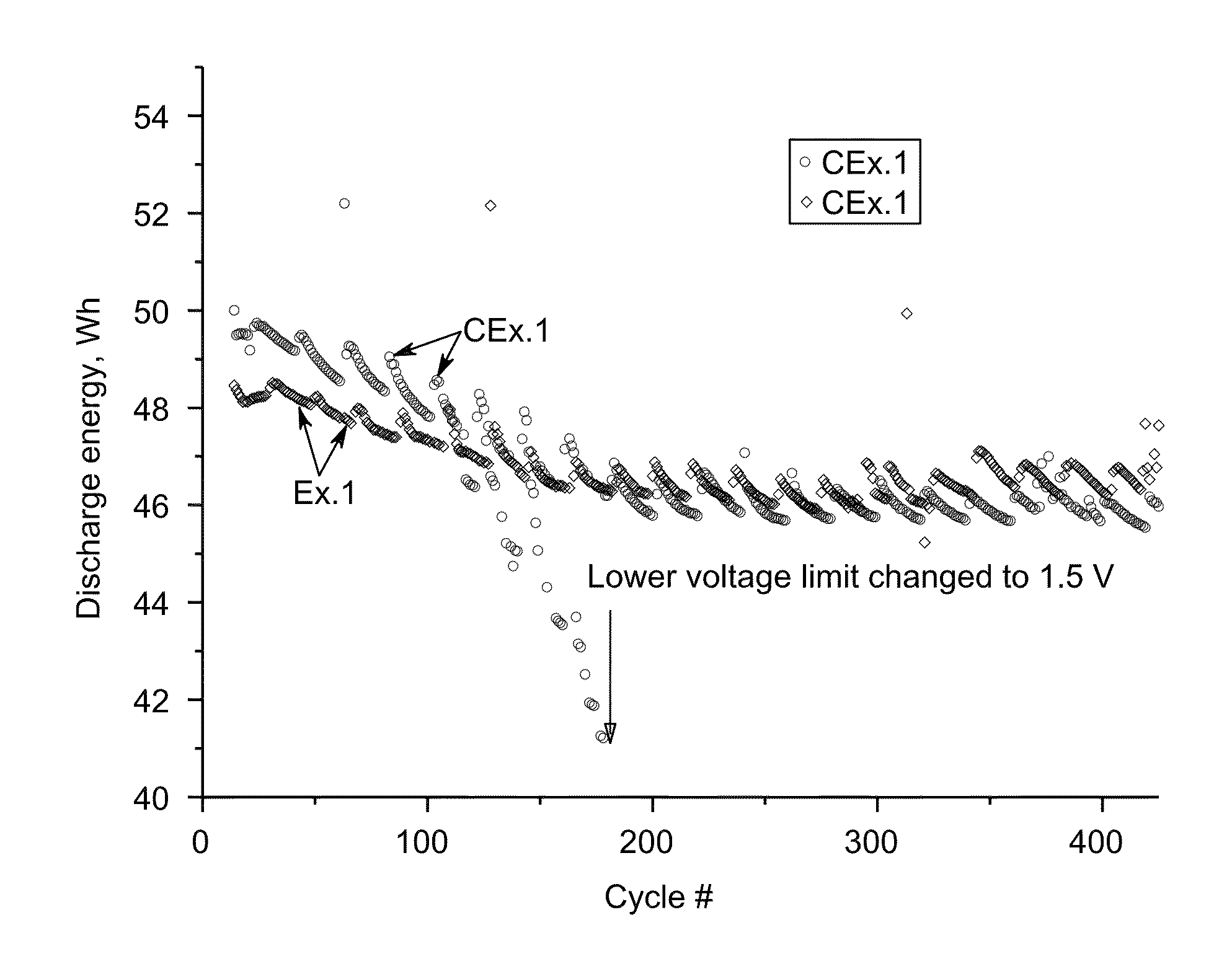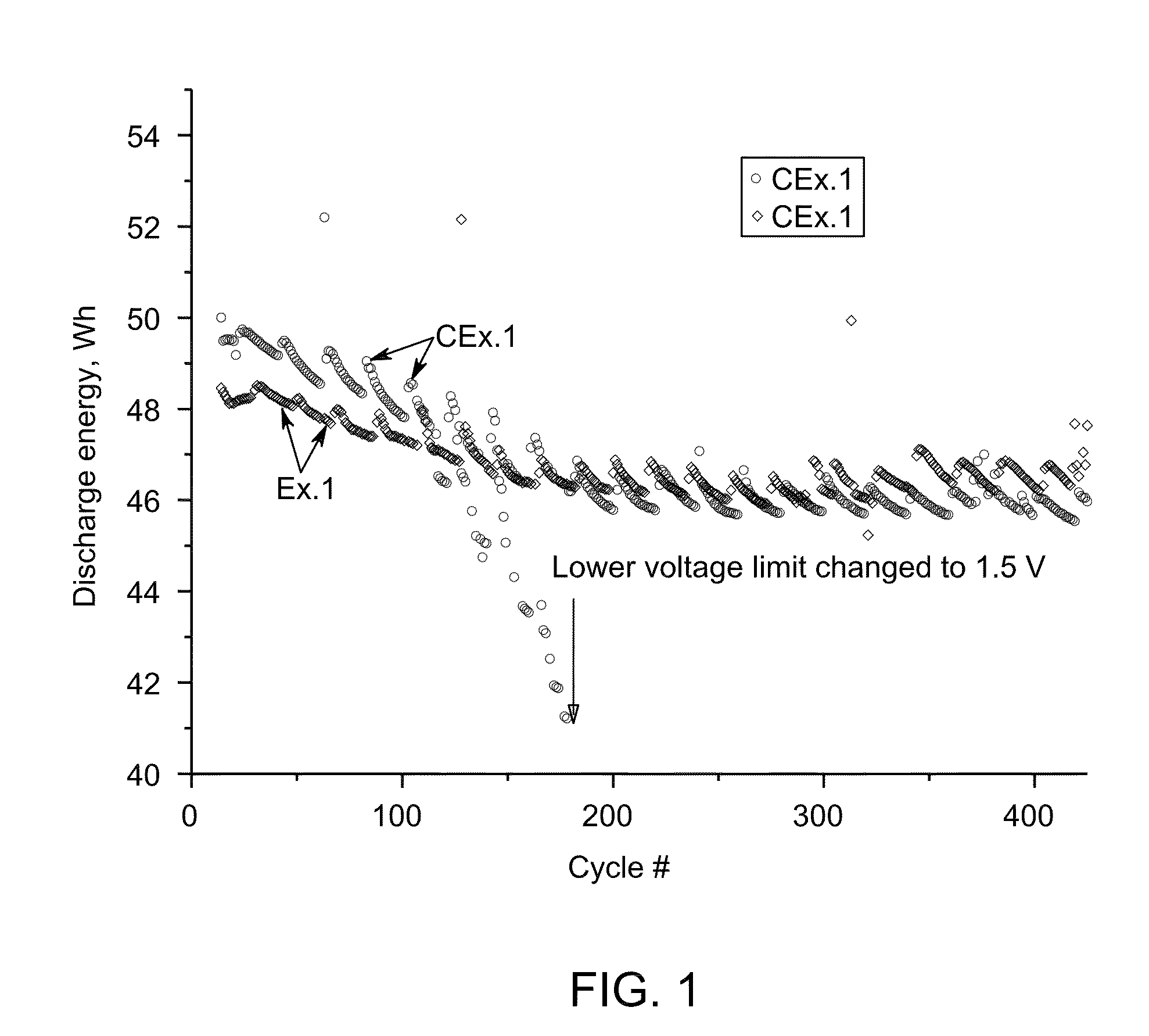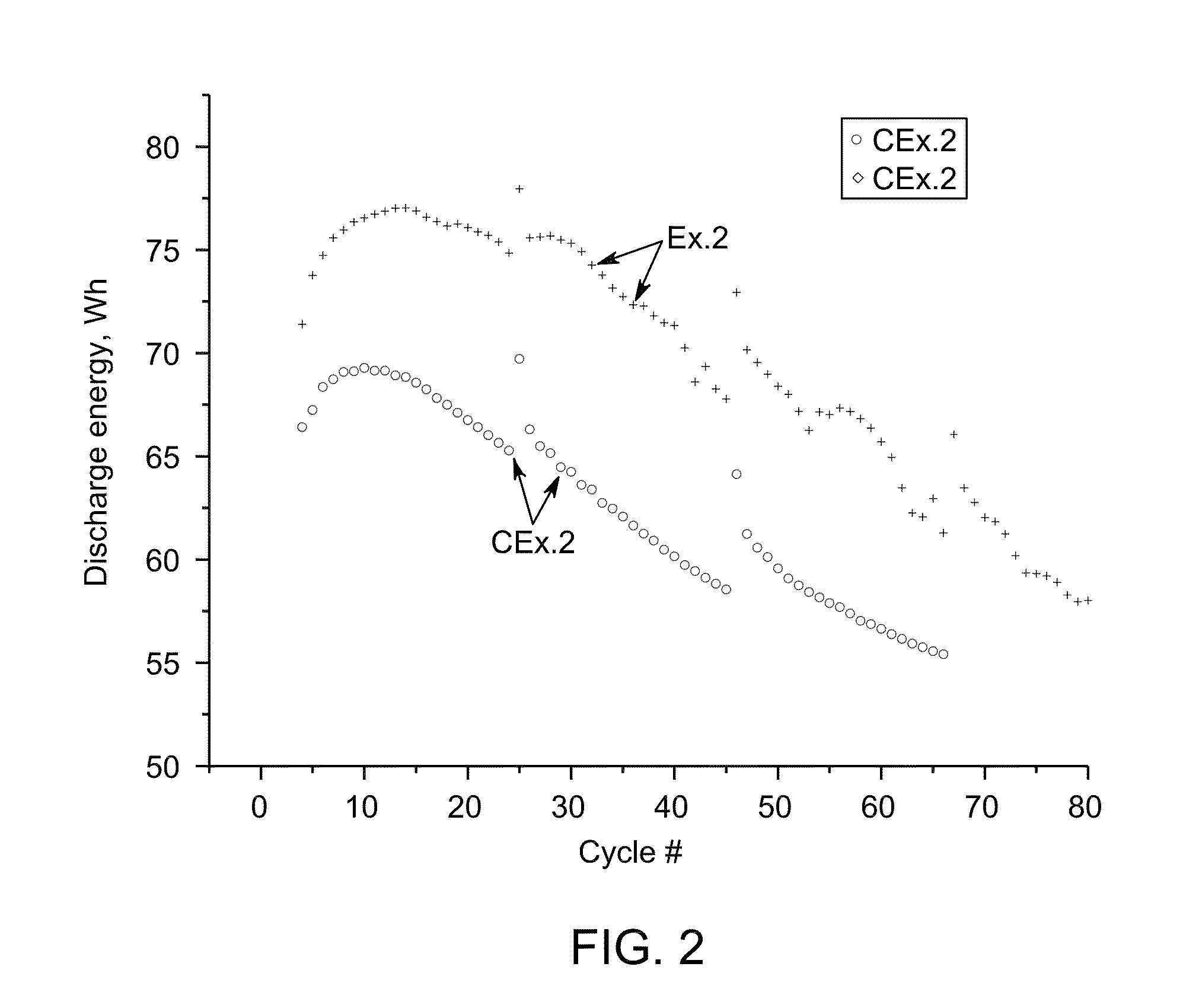Composition and energy storage device
a technology of energy storage and composition, which is applied in the direction of non-aqueous electrolyte cells, non-metal conductors, cell components, etc., can solve the problems of high variability in battery performance, high cost, and high energy density after the first full battery charg
- Summary
- Abstract
- Description
- Claims
- Application Information
AI Technical Summary
Benefits of technology
Problems solved by technology
Method used
Image
Examples
example 1
, and Comparative Example 1 (Ex. 1 and CEx. 1)
[0061]Ten cells with similar nickel-sodium chloride cathodes containing about the same amount of sulfur additive-iron disulfide FeS2 (Example 1, Ex. 1) and iron monosulfide FeS (Comparative Example 1 CEx. 1) were assembled and tested according the protocol A. The cathode compositions are shown in Table 2. Example 2 and Comparative Example 2 (Ex. 2 and CEx. 2)
[0062]The cells with similar nickel-sodium chloride cathodes containing iron disulfide FeS2 (Example 2) and iron monosulfide FeS (Comparative Example 2 CEx. 2) with about the same amount of total sulfur have been assembled and tested according the protocol B. The cathode compositions are given in Table 2.
[0063]
TABLE 2Cathode composition of Control and Example Cells.CEx. 1Ex. 1CEx. 2Ex. 2Ni, g140.0136.2136.1136.9NaCl, g103.0100.2107.5108.0Al. g2.001.951.951.96NaF, g5.004.86——NaI, g1.000.970.990.99FeS, g4.00—3.91—FeS2, g—3.89—2.60Total solids, g255.0248.0250.4250.5NaAlCl4, g115.0115.01...
examples 3-9 (ex.3-ex.9)
Examples 3-9 (Ex. 3-Ex. 9)
[0066]Electrochemical cells were assembled with cathode containing varying compositions as given in Table 3 and were tested according to the Protocol B results of the testing are shown in Table 3 and FIG. 3. It may be observed that as the amount of FeS2 in the cathode composition increases, an increase in the cycling capacity is noticed (Table 3). Cathode compositions having additives such as NaI and NaF showed better stability and lesser degradation rate (Ex. 7-Ex. 9) in comparison with cathode composition having only NaF (Ex. 6).
[0067]
TABLE 3Cathode composition of cells containing FeS2 and optionalNaI and NaF additives and Test Result for Protocol B.CompositionEx. 3Ex. 4Ex. 5Ex. 6Ex. 7Ex. 8Ex. 9Ni, g139.1135.3134.0132.8132.9128.4129.7NaCl, g108.0108.0108.0108.0108.0108.0104.0Al. g2.01.91.91.91.91.81.9NaF, g———2.51.75.01.0NaI, g——1.3—2.02.01.0FeS2, g1.35.25.25.23.95.27.8Total solids, g250.4250.4250.4250.4250.4250.4245.4NaAlCl4, g125.0125.0125.0125.0125.012...
example 11 (
Ex. 11)
[0070]The cathode for Ex. 11 was prepared by blending a composition of nickel powder (˜138.1 g); sodium chloride (˜100.1 g); Aluminum, (˜2.0 g); sodium fluoride (NaF, ˜2.47 g); sodium iodide (NaI, ˜1.44 g); sodium disulfide (Na2S2, ˜2.91 g); and NaAlCl4, (˜125.0 g) using the procedure described above. The cell was tested according Protocol A. During 180 cycles no cell degradation was observed while cells with cathode of CEx. 1 and CEx. 2 displayed a degradation rate of about 0.015 Wh / cycle.
PUM
| Property | Measurement | Unit |
|---|---|---|
| melting point | aaaaa | aaaaa |
| melting point | aaaaa | aaaaa |
| melting point | aaaaa | aaaaa |
Abstract
Description
Claims
Application Information
 Login to View More
Login to View More - R&D
- Intellectual Property
- Life Sciences
- Materials
- Tech Scout
- Unparalleled Data Quality
- Higher Quality Content
- 60% Fewer Hallucinations
Browse by: Latest US Patents, China's latest patents, Technical Efficacy Thesaurus, Application Domain, Technology Topic, Popular Technical Reports.
© 2025 PatSnap. All rights reserved.Legal|Privacy policy|Modern Slavery Act Transparency Statement|Sitemap|About US| Contact US: help@patsnap.com



